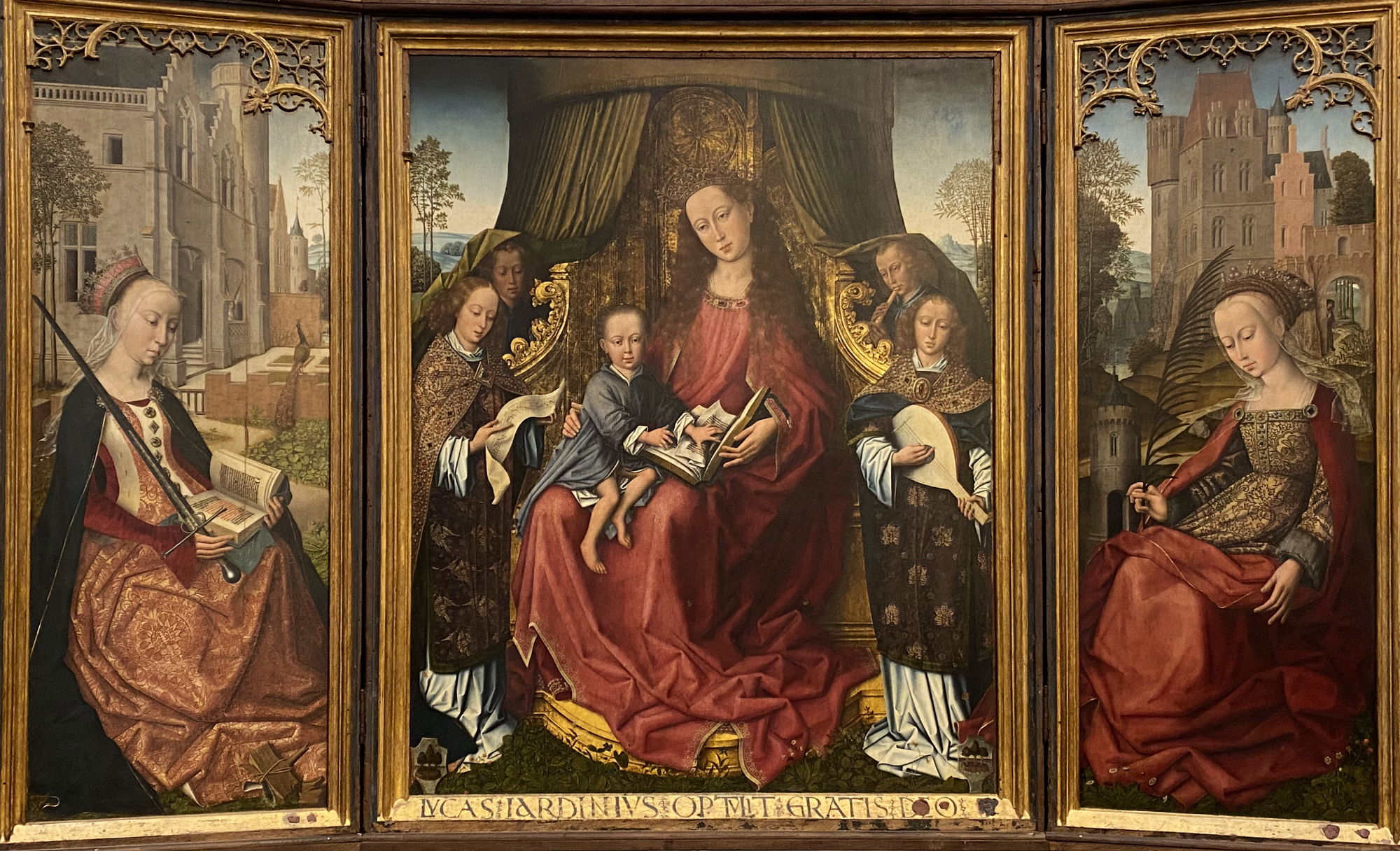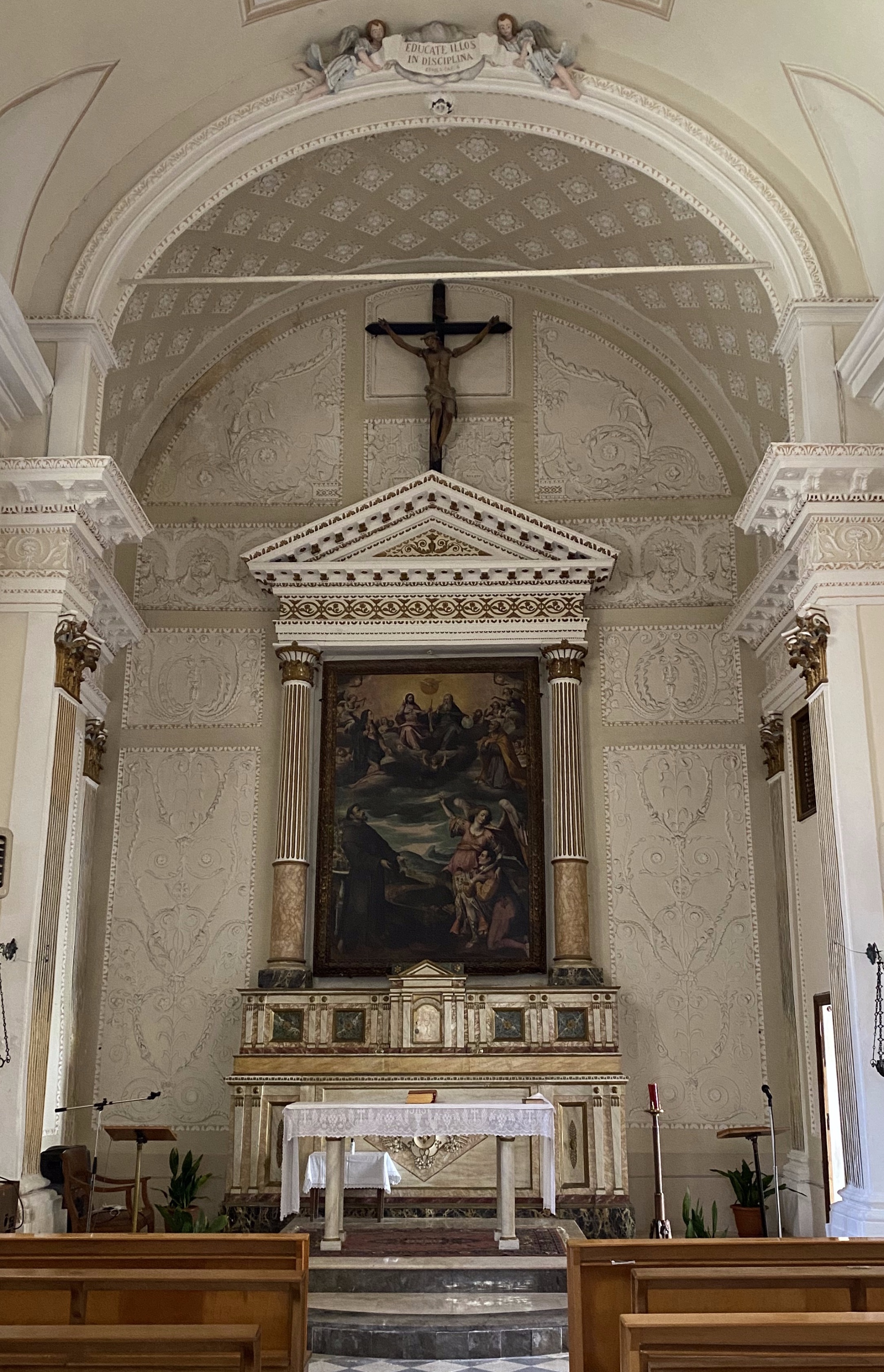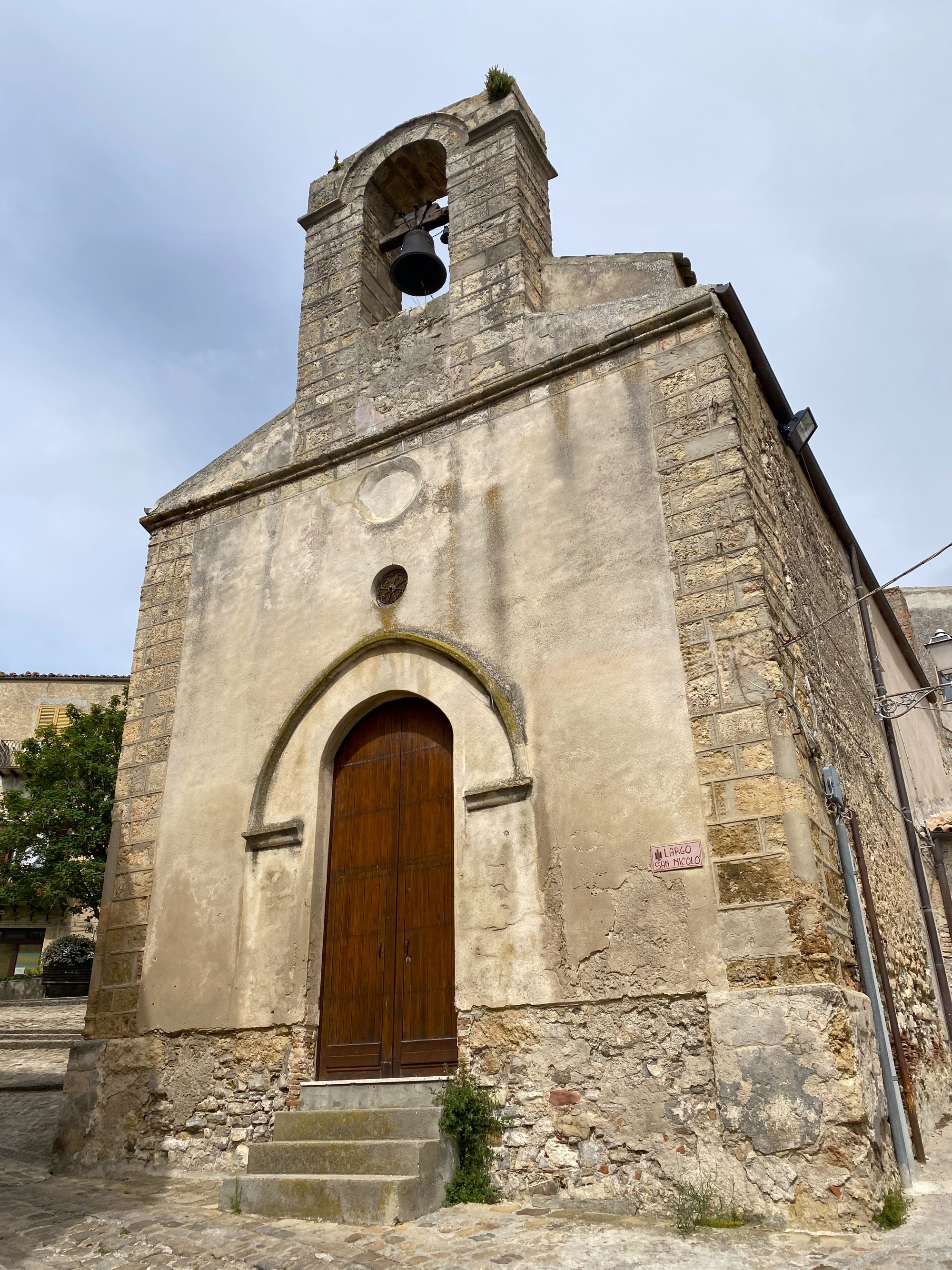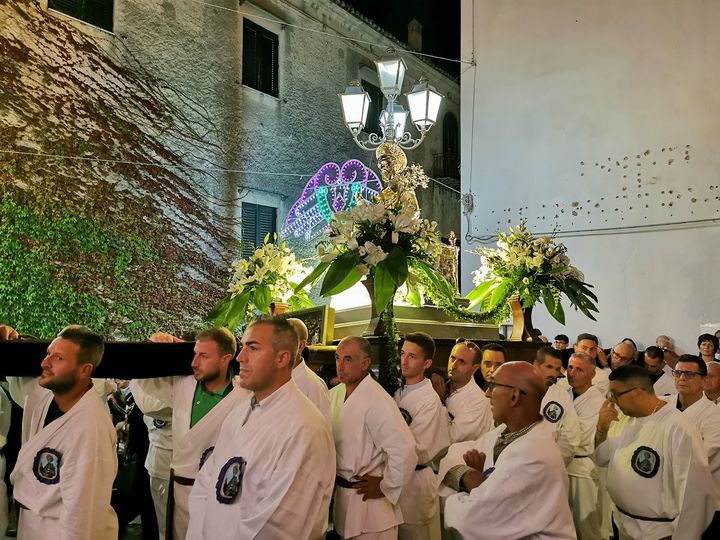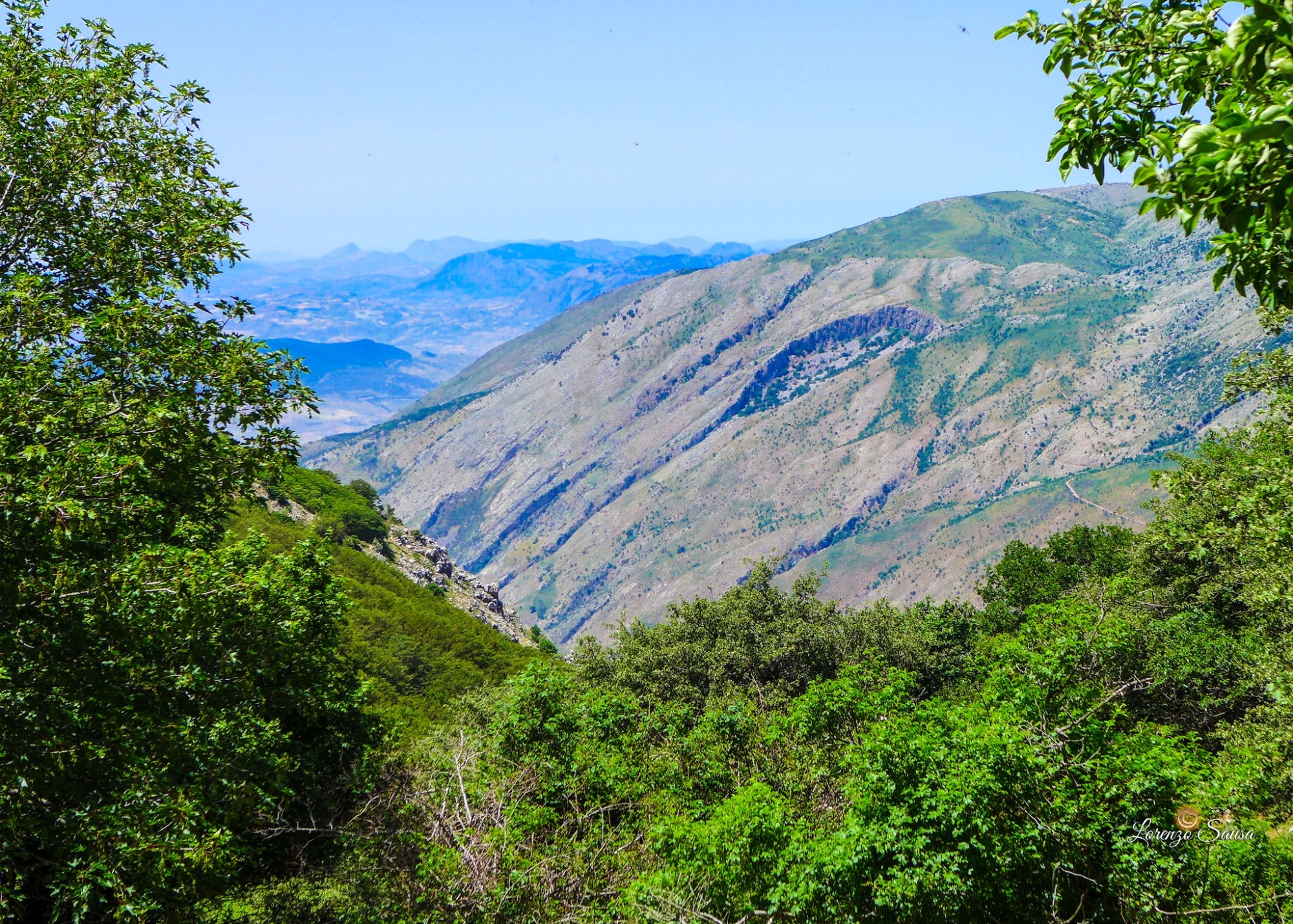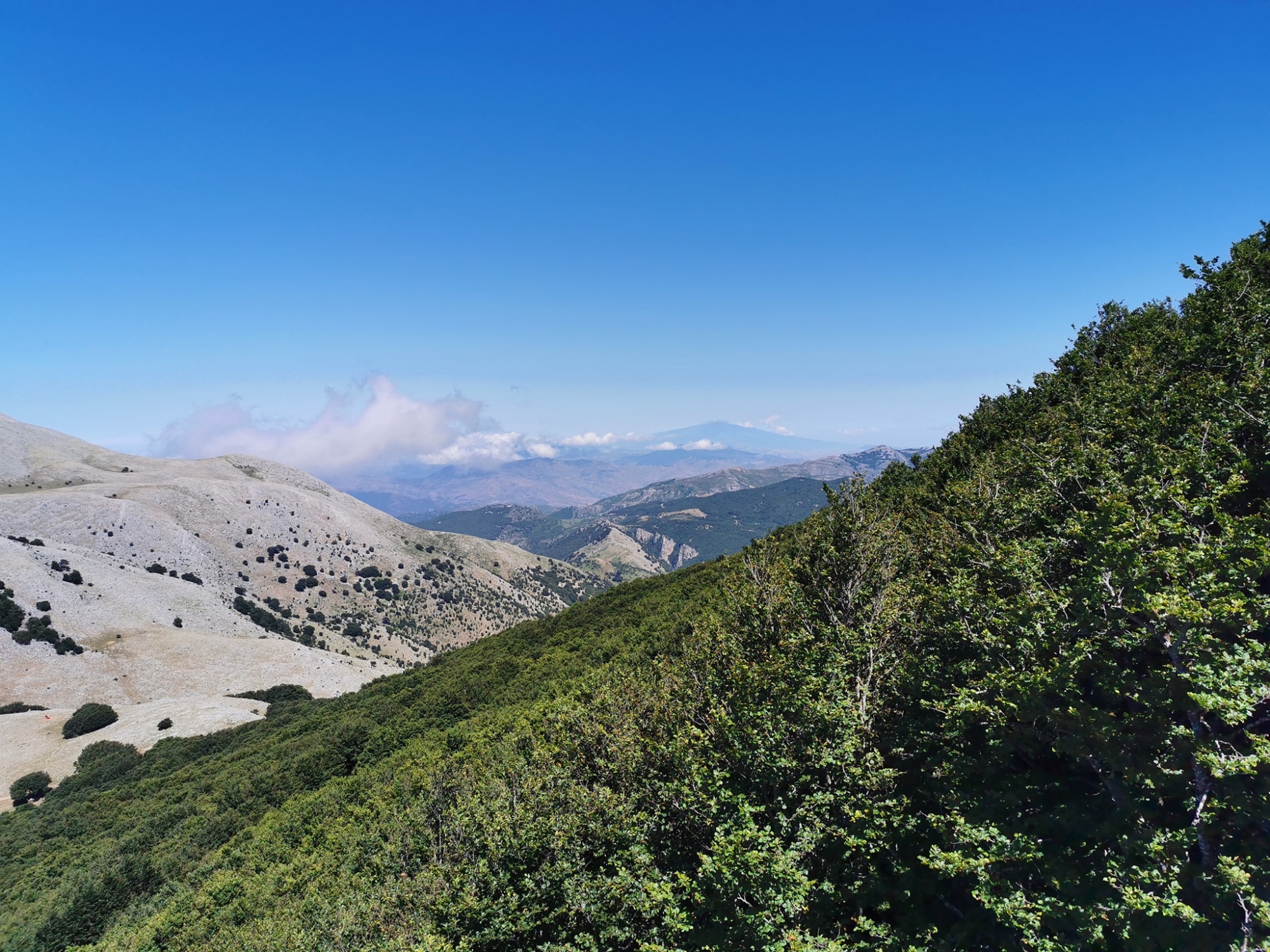FIRST STAGE: CHIESA DI MARIA SANTISSIMA ASSUNTA
Gaze out over the square, where majestic views open up over the valleys and mountains of Sicily—the same lands traversed by San Gandolfo, a 13th-century Franciscan monk from Lombardy, on his journey to Polizzi Generosa. This village, once one of the king’s few cities and a crossroads for pilgrims and travelers, holds deep historical and spiritual significance. From here, looking northwest, admire the valleys stretching toward the sea, and discover the Hermitage of San Gandolfo, the area's first sacred site, built to commemorate the saint’s first miracle
BORGESE GENIUS LOCI
"It is 17 September, the day of the patron saint, San Gandolfo, a Lombard Franciscan who walked as far as the Madonie Mountains and his broom bloomed with jasmine lilies. It is no longer lily season; but I still have in my nostrils, and in every pore, the aroma and blue of a September day between those mountains and the sea."
G.A. Borgese, Nature morte, Melone e gelato, Corriere della Sera, Wednesday 19 March 1952
SECOND STAGE: THE PROCESSION OF THE SANTO AFTER THE "ACCHIANATA"
Stroll along the ancient streets of Polizzi, a backdrop to centuries of religious life and deep devotion. This village is home to nearly thirty churches, each telling stories of faith and evocative celebrations. Among these are the many processions held throughout the year in honor of San Gandolfo, where the quiet reverence of the alleys gives way to lively squares filled with the sounds of a marching band and the authentic flavors of tradition. All of this is framed by the opulent façades of churches and noble palaces, hanging gardens, and monumental staircases.
BORGESE GENIUS LOCI
"There was the beautiful procession, with the many-coloured wooden saint borne aloft, and the cries (Viva viva San Gannorfu) the bearers and the people at the breaks and passages; and behind the saint, the priests, in gowns - so many, in the municipality of five thousand souls and thirty churches - with candles in their hands - but the flame is almost invisible, such is the light from heaven - and the litanies […]"
G.A. Borgese, Nature morte, Melone e gelato, Corriere della Sera, Wednesday 19 March 1952, now in Gandolfo Librizzi, Il viaggio di un cosmopolita. Il percorso umano e culturale di Borgese attraverso le lettere ai familiari, Palermo University Press, 2022, p. 164
FINAL STAGE: THE FAIR
Discover the wealth of sacred art dedicated to San Gandolfo, who lived in Polizzi for only forty days yet became a symbol of devotion that has endured for over 700 years. Inside the Chiesa Madre di Maria SS. Assunta, the site of his first sermon, marvel at the silver urn crafted with extraordinary skill by Nibilio Gagini, which houses the saint's relics. Admire the imposing Marble Ark, a majestic sculptural masterpiece that narrates the saint's life in intricate detail.
Continue to the Church of San Gandolfo La Povera and the medieval Church of San Nicolò de Franchis. In the former, you’ll find unique works of art, including a painting by Giuseppe Salerno depicting San Gandolfo's patronage and showing Polizzi as it appeared in the 1600s. Finally, end your visit at the Church of San Nicolò, located along the Via Francigena and near the ancient Jewish quarter, where the saint passed away. This sacred site still preserves symbols of popular traditions tied to the memory of San Gandolfo.
BORGESE GENIUS LOCI
"The bells ringing, incense, firecrackers, tambourines, long meals, the folded hands. In the afternoon, the main attraction is the fair in Piazza Grande. There is crockery; a battering ram or bull bedecked with flowers rides through; above all, there are the stalls with a small selection of toys, and the nougats, almonds, hard mint candy, liquorice and even ice cream. But our home is far away; it is on the last spur of the hill".
G.A. Borgese, Nature morte, Melone e gelato, Corriere della Sera, Wednesday 19 March 1952, now in Gandolfo Librizzi, Il viaggio di un cosmopolita. Il percorso umano e culturale di Borgese attraverso le lettere ai familiari, Palermo University Press, 2022, p. 164

